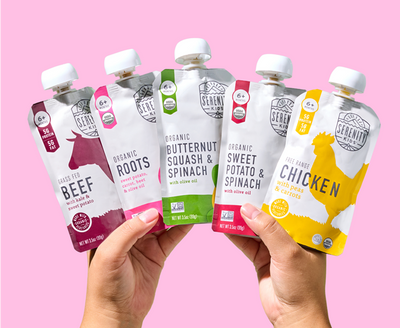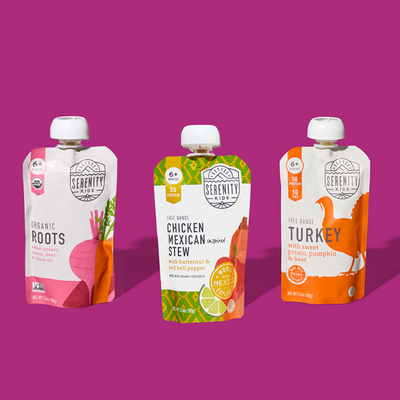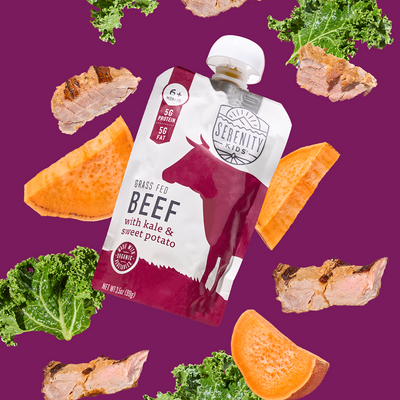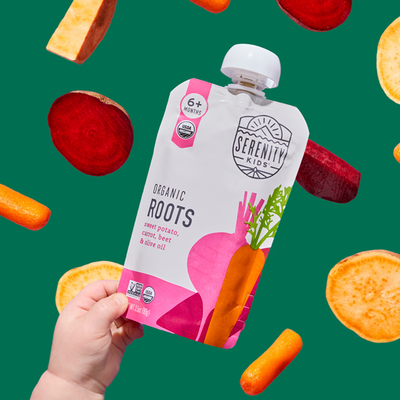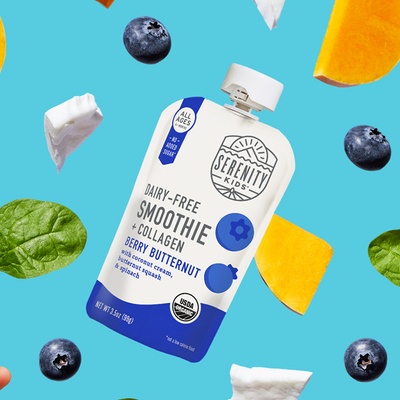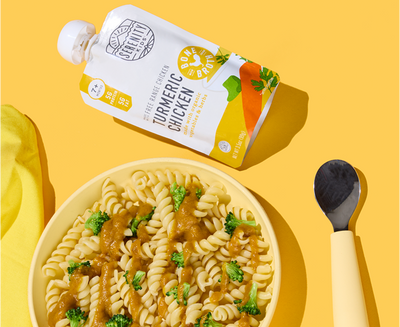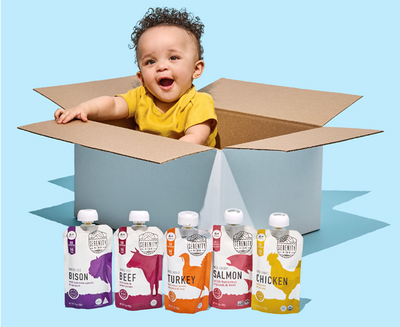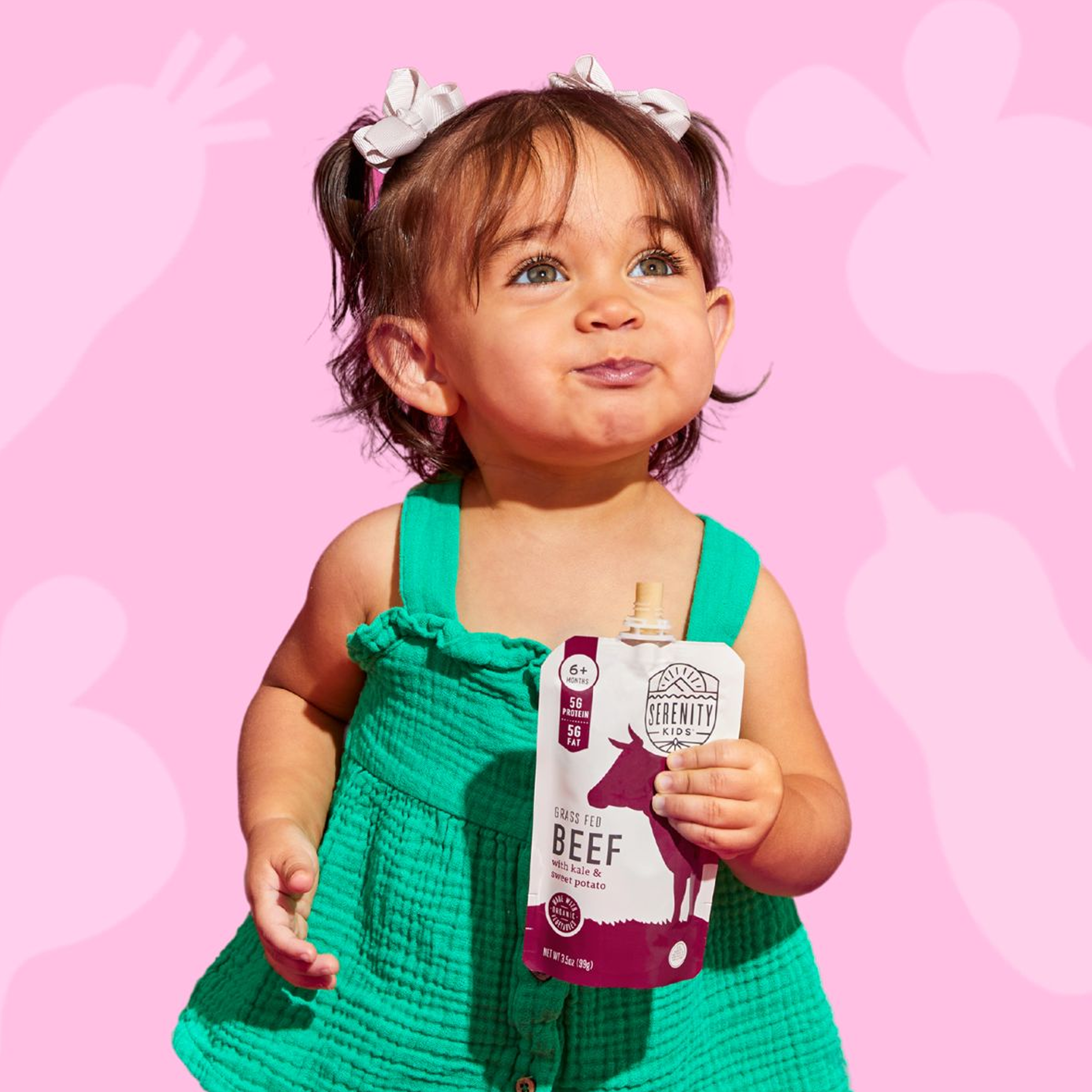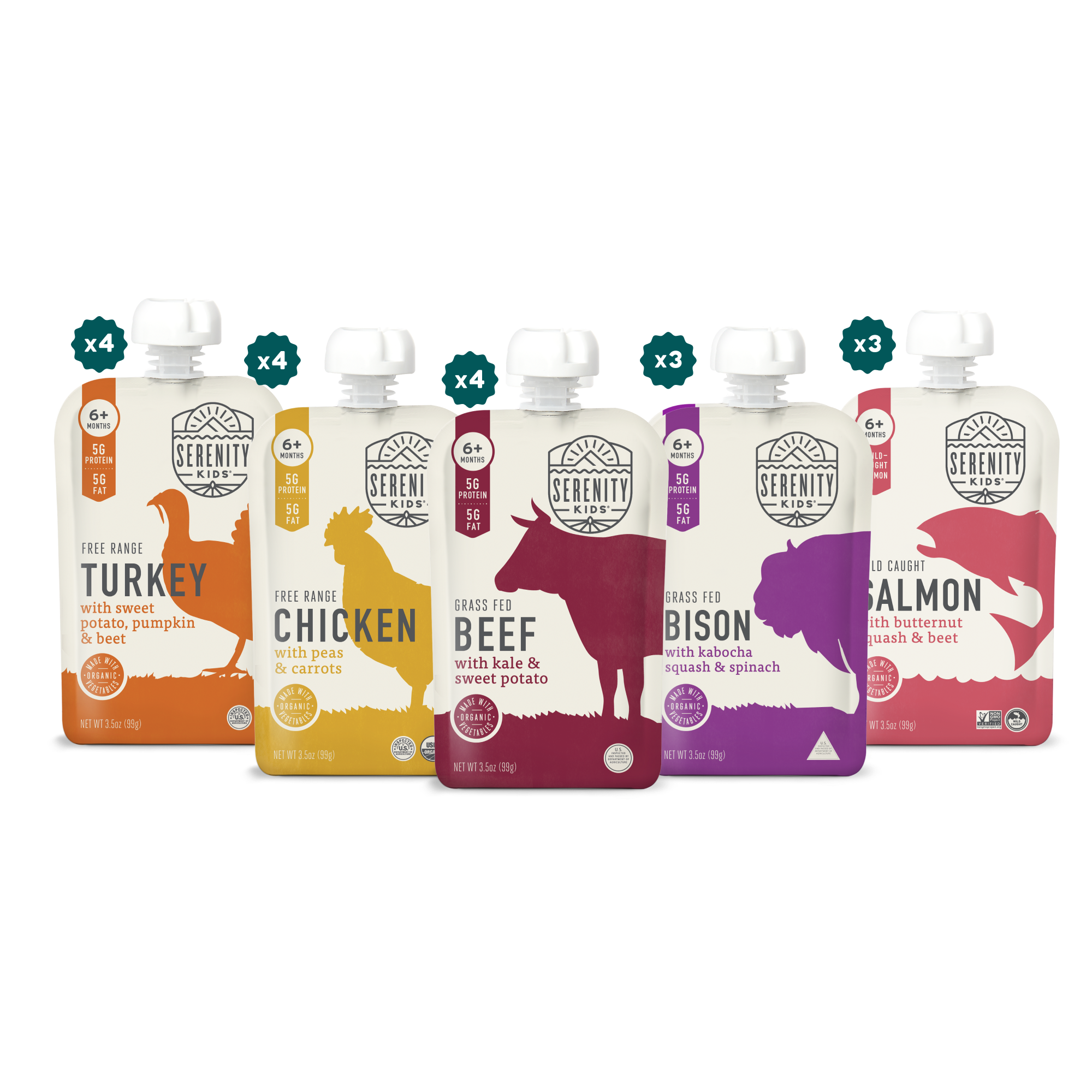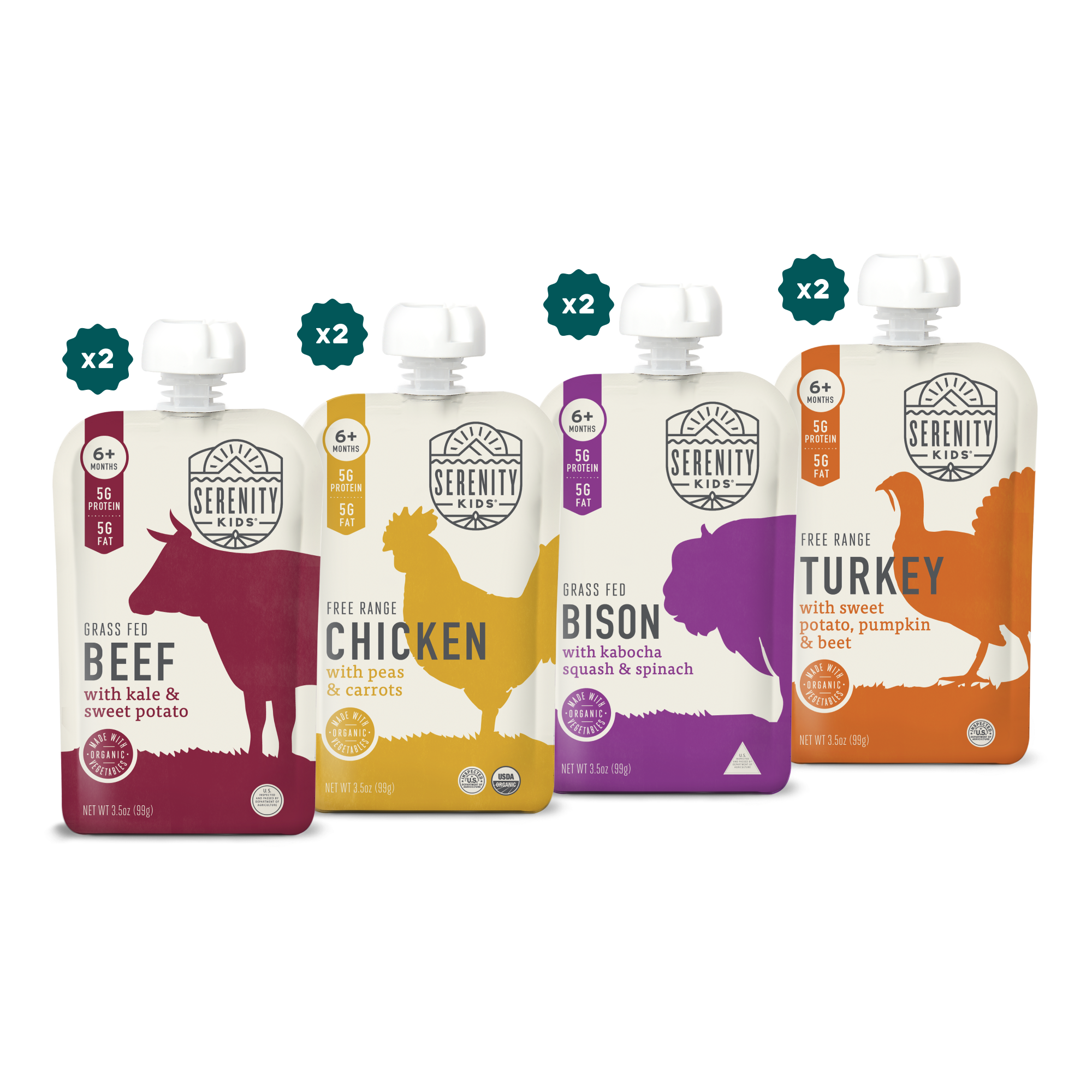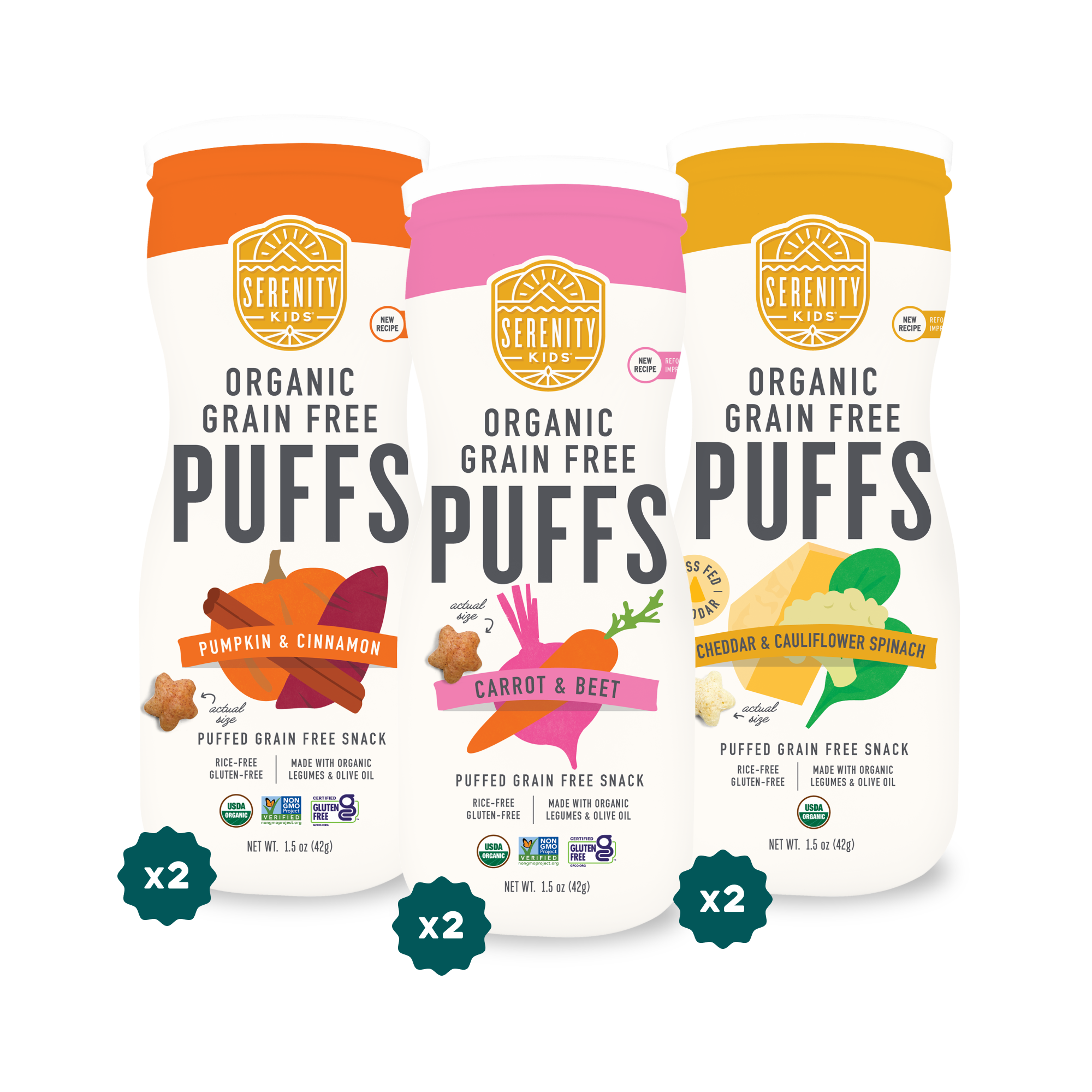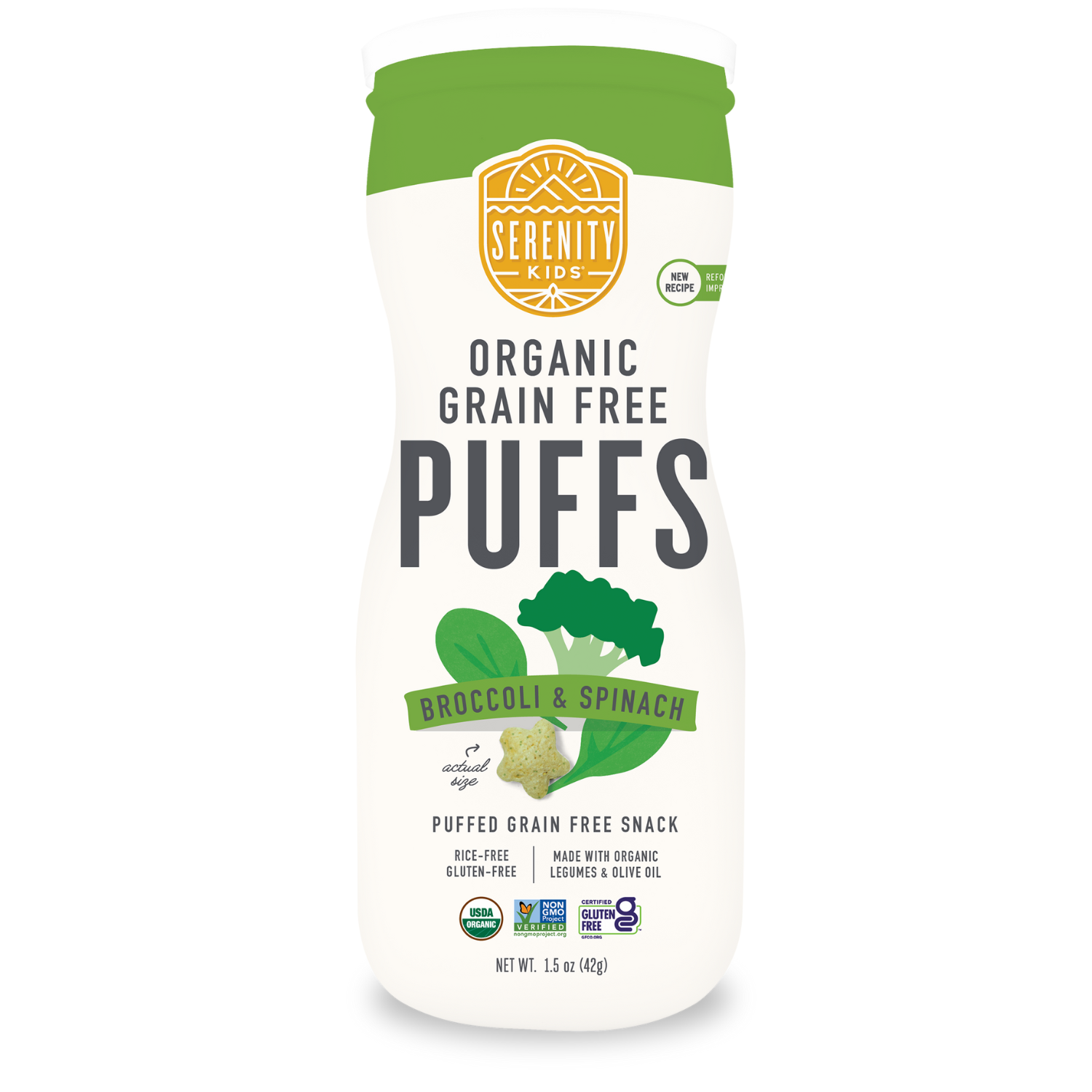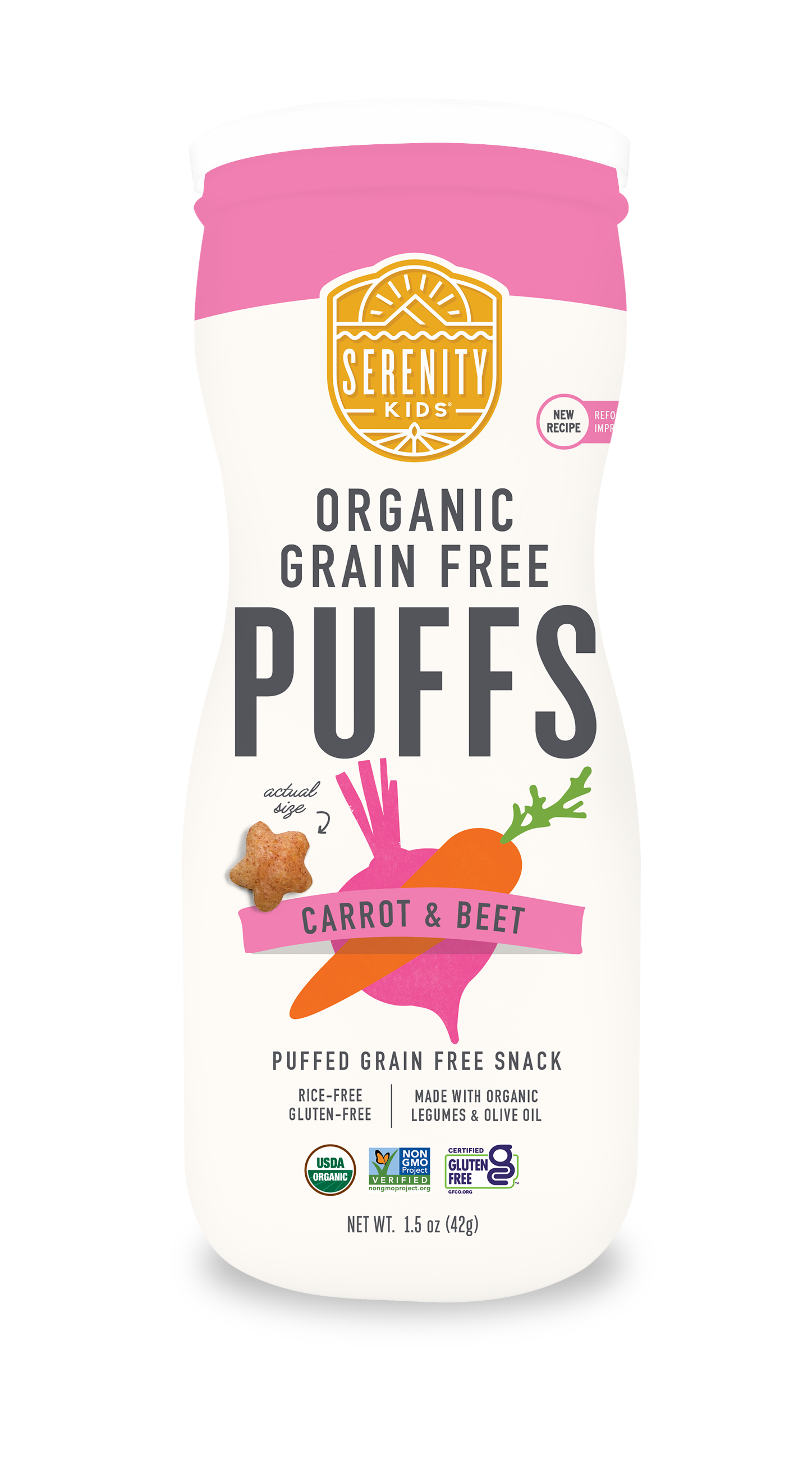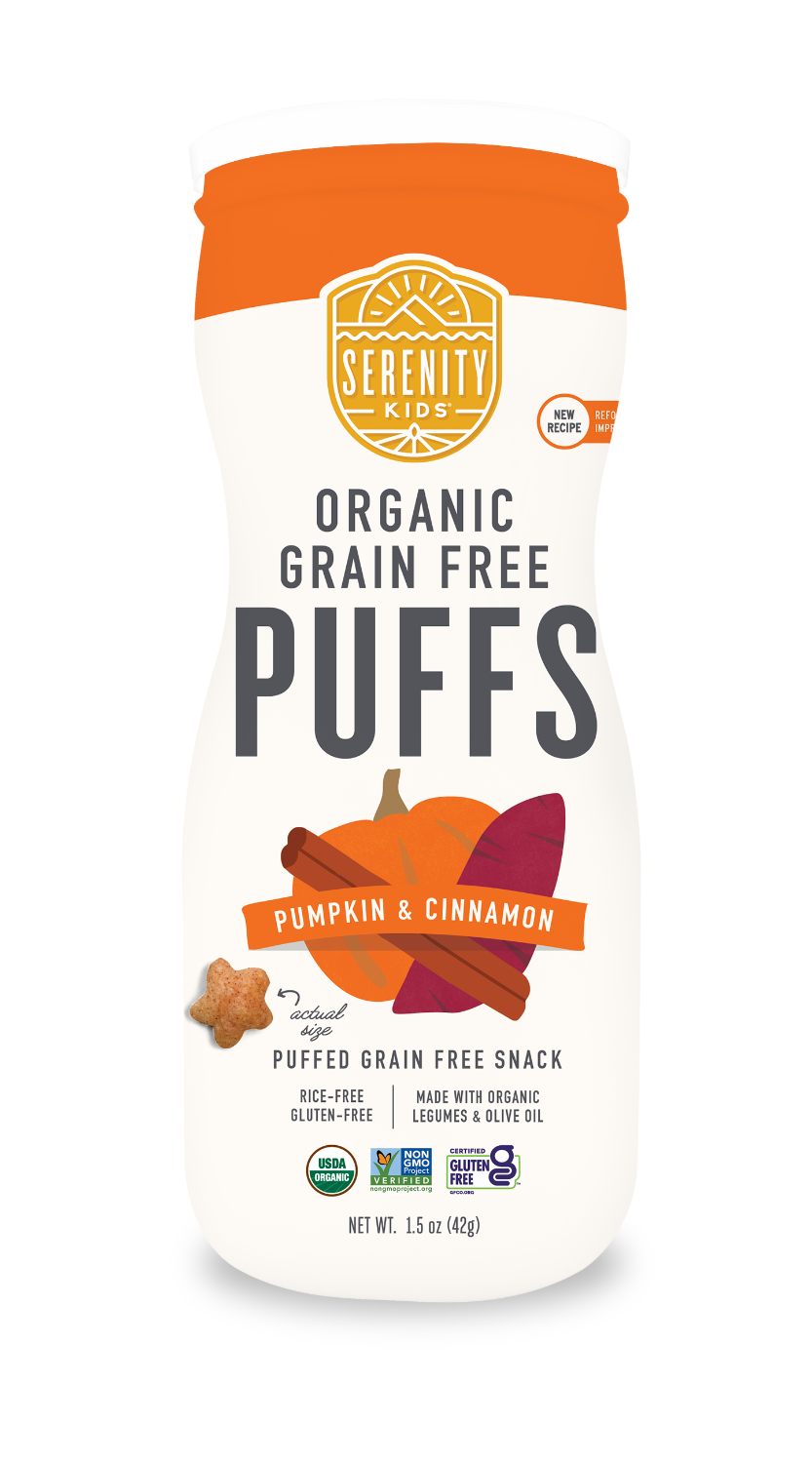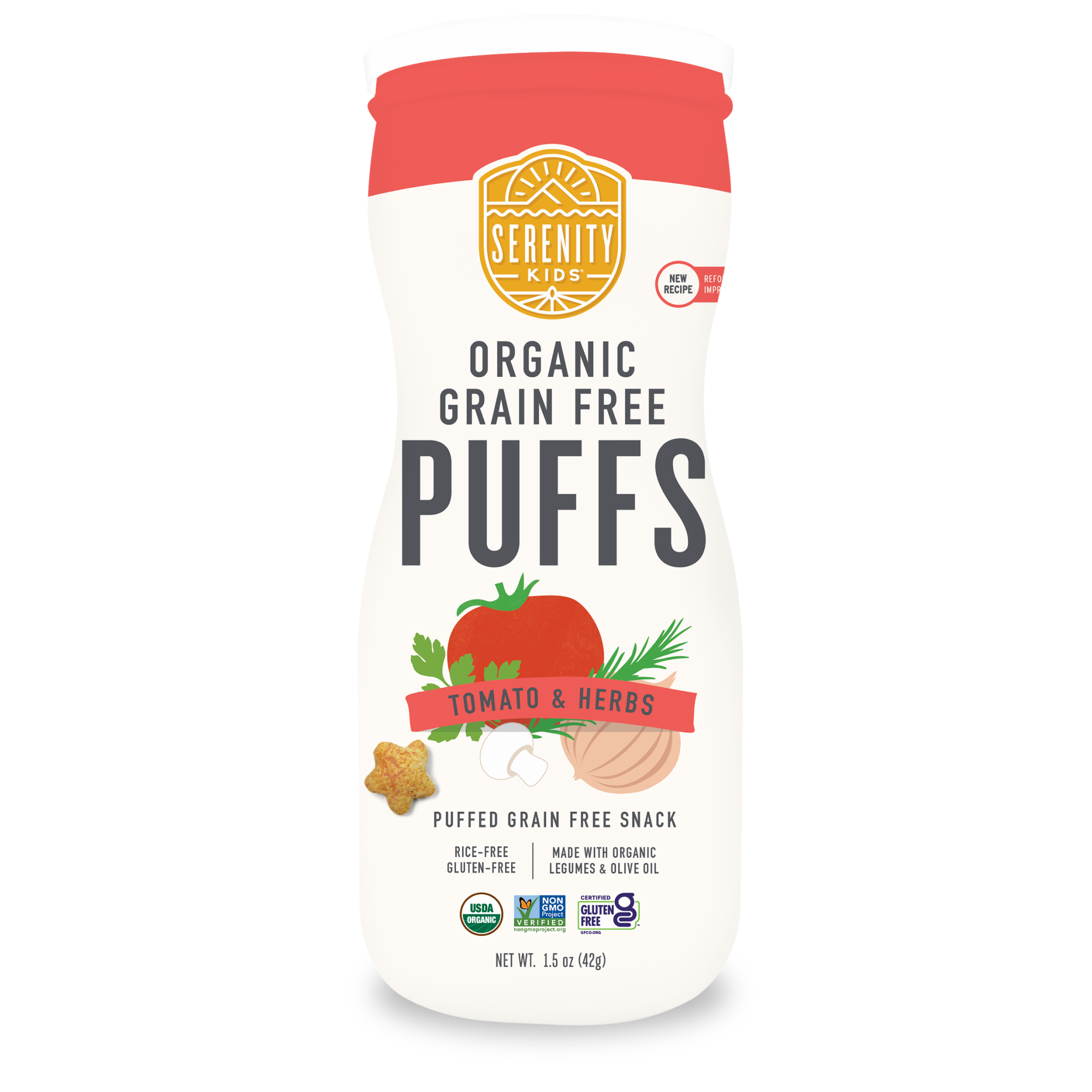Mealtime with a toddler can sometimes feel like a tiny, tyrannical dictator has taken over your home. One minute, they're is gobbling up everything in sight. The next, they're turning up their nose at their "favorite" foods. It's enough to drive any parent to the brink of sanity.
We’ve been there too. We know the frustration and exhaustion that comes with trying to feed a picky eater. But we also know that with the right approach, mealtime can be a less stressful and more enjoyable experience for everyone involved.
This blog post will offer guidance and actionable steps to build a strong nutritional foundation for your toddler, even with the ups and downs of this developmental stage. We'll help with healthy and easy toddler meals, food ideas, and meal plan ideas. If you're wondering when can your little one start eating real food, check out our blog post for more info.

Understanding Your Toddler Eater
Toddlers are notorious for their unpredictable eating habits. What they devoured yesterday might be met with disgust today. This can be incredibly frustrating for parents, but know that these behaviors are entirely normal.
Normal Toddler Eating Behaviors
- Pickiness: Toddlers are exploring their senses, and this includes taste. They might become fixated on certain textures, flavors, or colors.
- Food Phases: It's common for toddlers to go through phases of loving and hating specific foods. This is part of their learning process.
- Appetite Fluctuations: Toddlers' appetites can vary greatly from day to day, even meal to meal. Growth spurts and activity levels influence this.
- Mealtime Challenges: Power struggles, food throwing, and picky eating are all typical toddler behaviors.
Why Your Toddler Might Be Picky
Toddlers are little humans with big personalities, and their eating habits are no exception. Here are some common reasons why your toddler might be picky:
- Exploration time: Toddlers love to explore, and that includes their food! Let them touch, smell, and even play with their food. It's a big part of the learning process. Serve finger foods and let them experiment.
- Decision-maker: With so many options, toddlers can feel overwhelmed. Keep mealtimes simple by offering 4-6 choices and always include a familiar favorite.
- Snack attack: If your toddler is filling up on snacks or liquids, they might not be hungry at mealtime. Try to space out snacks and meals a bit more, and no snacks within 2 hours of dinner.
- Teething troubles: Sore gums can make eating uncomfortable. Offer soft foods and provide plenty of teething relief options.
- Fear of the new: Some toddlers are hesitant to try new foods. Introduce new tastes gradually and pair them with familiar favorites.
- Texture troubles: Toddlers have preferences! Some like crunchy foods, while others prefer soft textures. Experiment with different ways to prepare the same food.
- Constipation: If your toddler seems uncomfortable during mealtimes, check for things like pain (like constipation) or an uncomfortable chair.
- Tired and wired: An overtired toddler is less likely to want to eat. Try to serve meals at a consistent time when your child is well-rested.
Remember, every toddler is different, and it's okay if their eating habits change from day to day. The key is to stay patient, offer a variety of healthy foods, and create a positive mealtime atmosphere.

The Role of Development in Eating Habits
Toddlers are undergoing rapid physical and cognitive development. Their brains are actively learning about the world, including food. This development influences their eating habits in several ways:
- Sensory Exploration: Toddlers use their mouths to explore the world around them. This can lead to food play and refusal.
- Independence: As toddlers assert their independence, they may refuse foods simply because they are offered.
- Copying: Toddlers often imitate the eating behaviors of their parents and peers. This can be both positive and negative.
There's a specific period called the "flavor window," typically between 6 and 18 months, when children are particularly receptive to new flavors. Think of it like training their palate; the more flavors they experience early on, the more likely they are to be adventurous eaters later in life. While your toddler might be past the peak of this window, it's never too late to expose them to different tastes. Consistent exposure can help them develop a broader acceptance of new foods.
By understanding these developmental factors, parents can approach mealtimes with patience and creativity. Remember, every child is unique, and what works for one toddler may not work for another. The key is to offer a variety of healthy foods consistently and create a positive and enjoyable mealtime atmosphere.
Building a Strong Nutritional Foundation
Toddlers are little explorers, and that includes exploring food! It's exciting to watch them discover new tastes and textures, but it can also be a bit of a rollercoaster. Let's talk about how to fuel their growing bodies with yummy and nutritious foods.
A balanced diet is like building a strong house – it needs a mix of different foods to be sturdy and healthy. Think fruits, veggies, proteins, and healthy fats. It's okay if your little one is picky sometimes; kids are learning and exploring!
Healthy Fats: A Brain Boost
Did you know that those good fats help your toddler's brain development and give them energy to zoom around? Think of foods like avocados, salmon, nuts (when they're old enough), and seeds as superfoods for their little bodies.
Here are some tasty ways to incorporate them into your toddler's diet:
- Avocado: This creamy fruit is packed with healthy fats and makes a delicious base for toast or can be mashed into meals.
- Nut butter: A great source of protein and healthy fats, but be mindful of allergies. Use it as a spread for fruit or as a dip for veggies.
- Olive oil and coconut oil: Use these healthy oils for cooking to add flavor and boost nutrient intake.
- Fatty fish: Incorporating fatty fish like salmon or sardines into their diet can provide essential omega-3 fatty acids.
Protein:
Protein builds and repairs tissues, supports brain development, it is the building block for your toddler’s growing body. Here are some delicious and toddler-approved protein sources:
- Shredded chicken: A versatile protein that can be used in endless recipes. Try it in tacos, salads, or as a simple meal with sweet potato fries. Rotisserie chickens save a ton of time!
- Hard-boiled eggs: A classic protein source, perfect for on-the-go snacks or as part of a breakfast or lunch.
- Deli meat: Opt for high-quality, nitrate-free, low-sodium options. Use it for grain-free wraps or as a topping for salads.
- Pulled pork: A flavorful and tender option that can be enjoyed on its own or as part of a meal.
- Serenity Kids Meat Pouches: Super convenient, ethically sourced, and delicious.
Wondering about the benefits of feeding your child meat? Check out our linked article!
Vitamins and Minerals:
Vitamins and minerals support overall health, immunity, and growth. They aid digestion and provide a feeling of fullness. Fruits and vegetables are packed with vitamins, minerals, and fiber. Focus on low-sugar options:
- Berries: Blueberries, raspberries, strawberries
- Avocados: A versatile fruit, high in healthy fats
- Leafy greens: Spinach, kale (can be disguised in smoothies or cooked dishes)
- Cruciferous vegetables: Broccoli, cauliflower, Brussels sprouts
- Sweet potatoes: Naturally sweet and packed with nutrients
- Green beans: A classic side dish that can be steamed, roasted, or stir-fried.
- Frozen peas: A convenient and nutritious option that can be added to soups, stews, or mashed potatoes.
- Mixed veggies: Introduce your toddler to a variety of flavors and textures with pre-cut mixed veggie blends.
- Avocado toast: A trendy and healthy option that's packed with good fats and fiber. Use grain-free bread or crackers for a delicious twist.
- Serenity Kids Veggie Pouches: Nutrient-dense, convenient, and toddler-approved!

Hydration is Key
Water is the best choice for quenching their thirst. Milk, including the whole milk toddler formula from Serenity Kids, can also be part of a balanced diet.
Snack Time Fun
Snacks are like mini-meals that keep their energy levels up between breakfast, lunch, and dinner. Fruits, veggies, yogurt, or other yummy options are great choices. Let's skip the sugary drinks and processed snacks as much as possible. For ideas on healthy snacks for picky eaters, check out our blog post!
Remember, every kid is different. The most important thing is to offer a variety of healthy foods and make mealtimes fun!
Meal Prep Magic
To make mealtime easier and more enjoyable, try these tips:
- Batch Cooking: Cook large batches of protein and grains on the weekend to save time during the week.
- Leftovers: Repurpose leftovers into new meals to reduce food waste.
- Serenity Kids Pouches: These convenient, shelf-stable food pouches offer a variety of nutritious options for busy parents.
- Involve your toddler: Let them help with meal prep or choosing foods to encourage healthy eating habits.
- Keep it simple: Don't overcomplicate meals. Focus on providing a balance of protein, healthy fats, and veggies.
In the next section, we'll share some delicious and easy meal ideas to inspire you.
Navigating Picky Eating
Picky eating can be a rollercoaster, but don't worry, you're not alone! Let's make mealtimes enjoyable for everyone.
Create a Happy Mealtime
- Chill vibes only: Make mealtimes relaxed and fun. Keep distractions to a minimum and take the pressure off of eating.
- Family feast: Eating together as a family can make mealtime more fun for your little one.
- Positive pats on the back: Celebrate small wins! Praise your child for trying new foods or cleaning their plate.
- You're the chef, they're the diner: Let go of control and embrace the Division of Responsibility feeding method. Discover how to create peaceful mealtimes while nurturing healthy eating habits.
Food Adventures
- Taste the rainbow: Introduce a variety of colorful foods. From bright red tomatoes to leafy green spinach, there's a whole world of flavors to explore.
- Patience is a virtue: It might take a few tries before your child likes a new food. Keep offering it without pressure.
- Mix it up: Combine new foods with old favorites to make them more appealing.
Cooking Together
- Kitchen helpers: Kids love to feel involved. Let your child help with simple tasks like washing fruits or stirring.
- Garden to table: If possible, grow your own herbs or veggies. It's a fun way to connect your child with food.
When They Say No
- Stay calm: It's okay if they don't want to eat something. Avoid turning mealtime into a battle.
- Offer choices: Give them a couple of options to choose from.
- Focus on the big picture: One meal isn't everything. Aim for a balanced diet over time.
- Listen to their body: Respect their hunger cues.
Lead by Example
- Monkey see, monkey do: Kids learn by watching. Show them how much you enjoy eating healthy foods.
- Food chat: Talk about why certain foods are good for us and how they make us feel.
Remember, every child is different. Be patient, creative, and most importantly, enjoy your meal times together!
Common Concerns
It's totally normal to have questions about your little one's eating habits. Let's clear up some common worries.
Allergies and Sensitivities
It can be a bit scary when you think your child might be allergic to something. If you notice any unusual reactions after feeding your little one a new food, it's best to chat with a healthcare provider. Common allergy culprits include milk, eggs, peanuts, tree nuts, wheat, soy, fish, and shellfish. Remember, it's always a good idea to introduce new foods one at a time and keep an eye on how your child reacts.
Weight
Toddlers are little explorers, and their appetites can change like the weather. It's totally normal for their appetites to fluctuate. Instead of stressing about how much is eaten, focus on offering a variety of yummy and healthy foods. If you're concerned about weight gain, a chat with your healthcare provider can put your mind at ease.
Nutrient Deficiencies
Most of the time, kids get all the nutrients they need from a balanced diet. But sometimes, little bodies might need a little extra something. If you notice your child seems tired, fussy, or isn’t growing like expected, it might be worth checking in with a healthcare provider.
FAQ
My Toddler is a Picky Eater! What Can I Do?
It's completely normal for toddlers to have strong preferences. The key is to stay patient and keep offering a variety of healthy foods. Make mealtimes fun and relaxed, and avoid power struggles. Involving your child in food preparation can also spark interest. Remember, it might take multiple tries for them to accept a new food.
What if I’m Worried About My Toddler’s Weight?
It's natural to worry about your child's weight, but remember that toddlers go through growth spurts. Focusing on offering a balanced diet with plenty of fruits, vegetables, and lean proteins is essential. If you have ongoing concerns, consult with a healthcare provider.
My Toddler Won't Eat Their Veggies! Any Tips?
Getting toddlers to eat their veggies can be a challenge, but it's important for their health. Try hiding veggies in sauces or soups, or offering them with dips like hummus or guacamole. Serenity Kids Smoothie Pouches are delicious with no added sugar - filled with nutrients for your growing toddler. Involving your child in preparing meals can also help. Remember, consistency is key. Keep offering a variety of vegetables and eventually, your child might surprise you!

